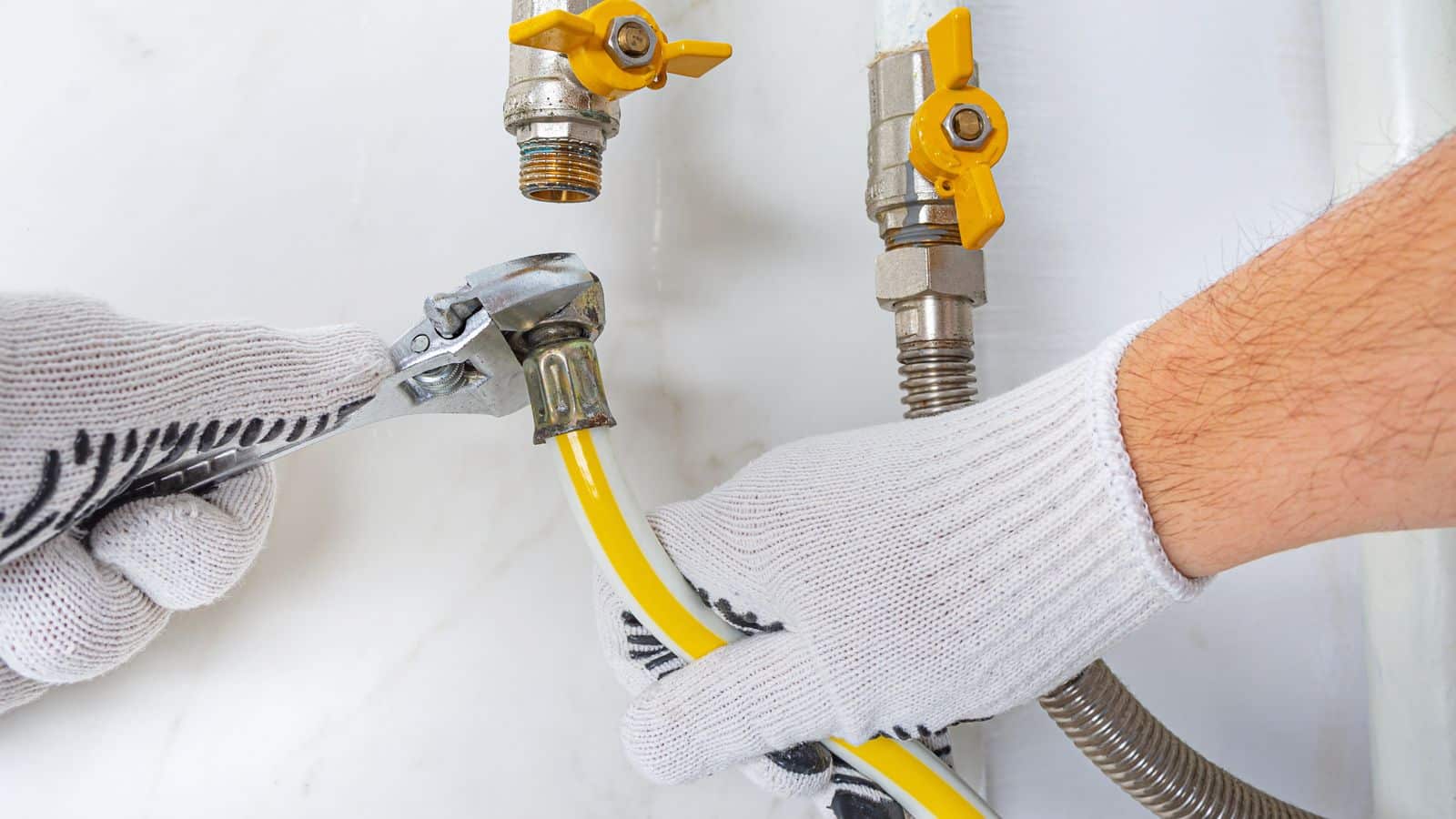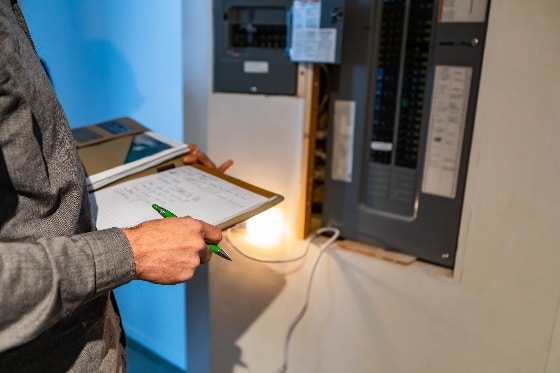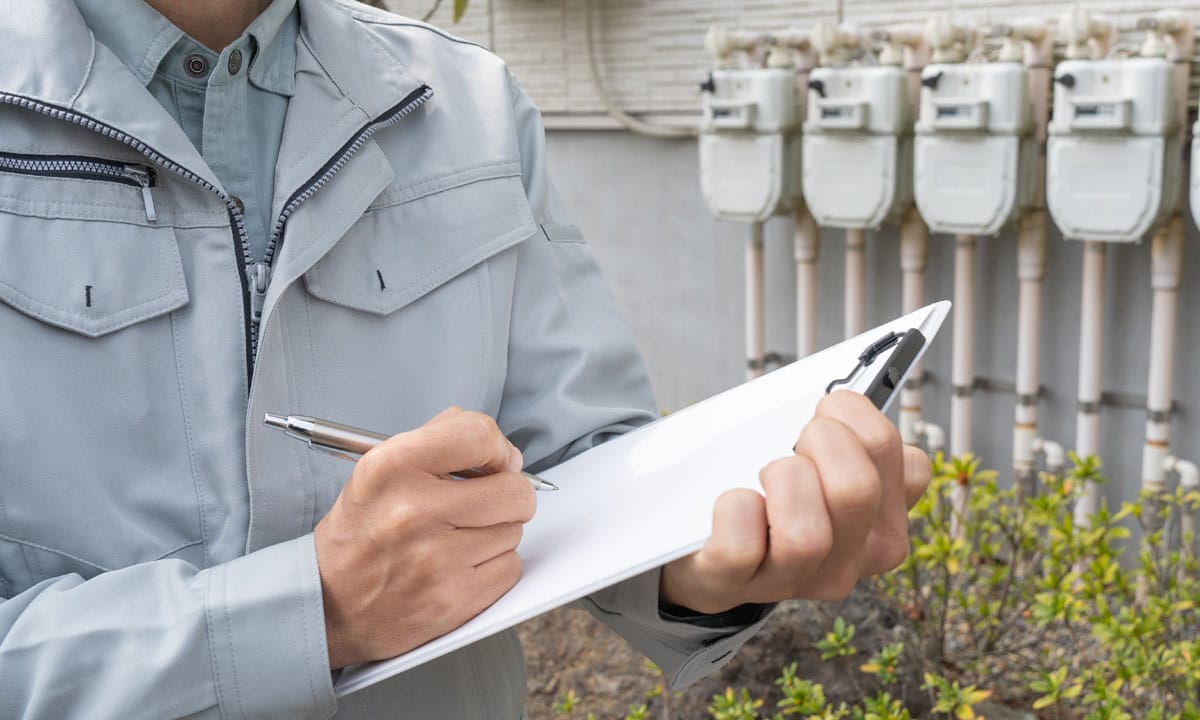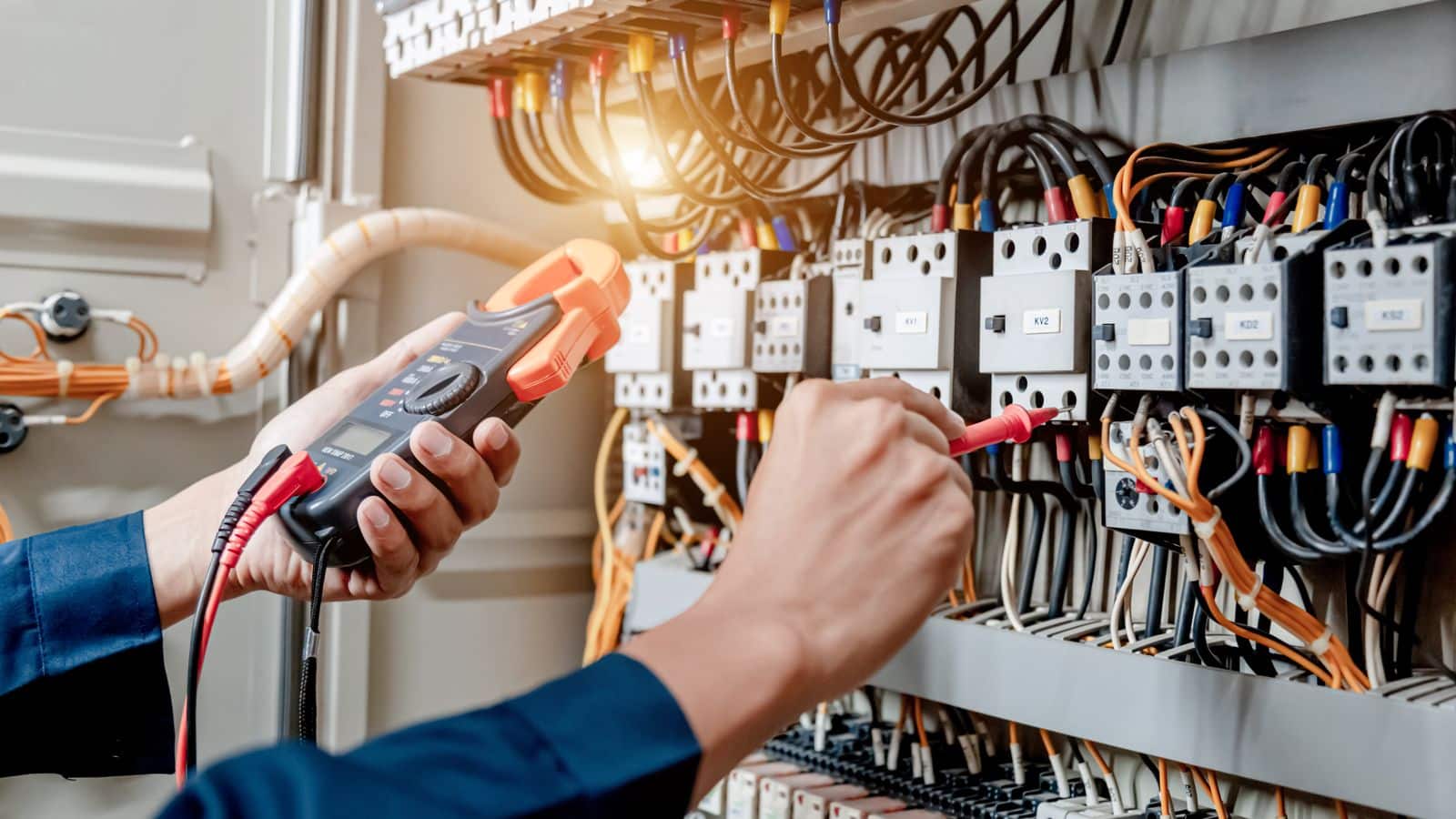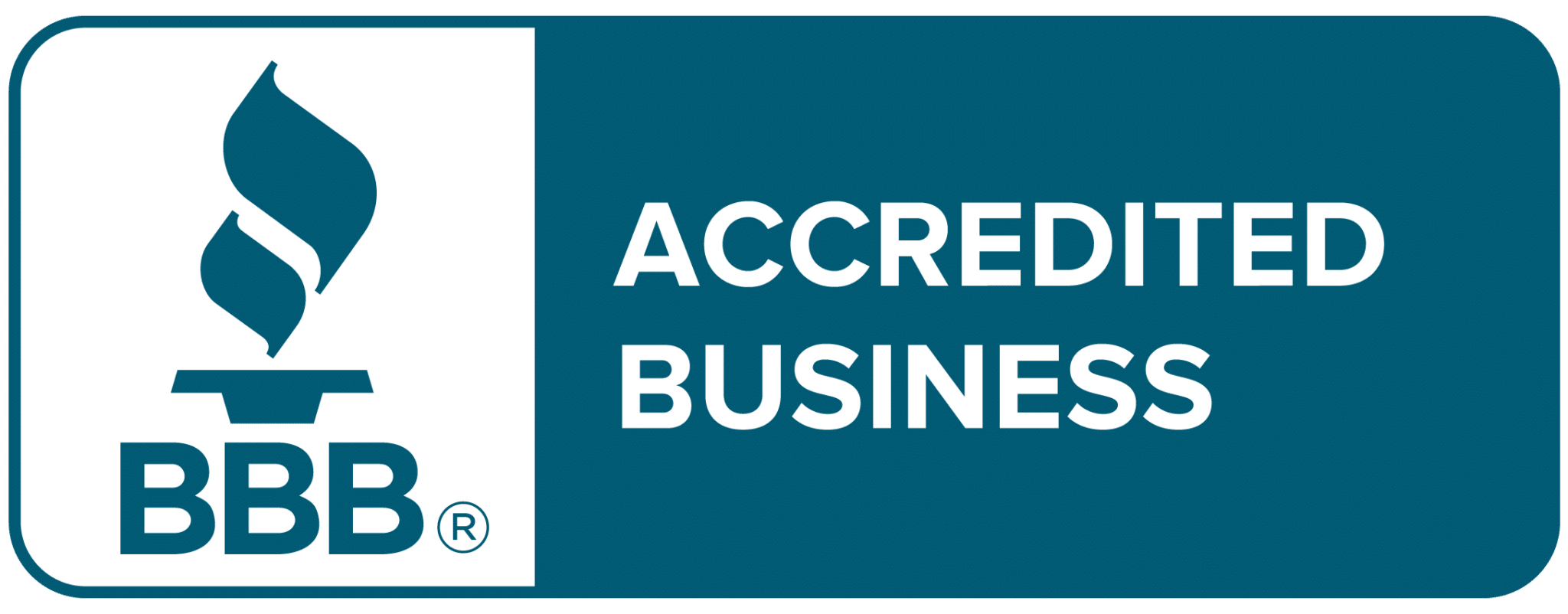The last thing any homeowner needs is the nightmare of frozen pipes wreaking havoc on their home. This common yet severe issue can disrupt your comfort and lead to costly repairs if not addressed proactively.
Since 1999, Done! Plumbing, Heating, Cooling and Electric has been the trusted name for plumbing services across the Denver metro area. Our motto, “One Call… It’s Done!”, reflects our commitment to delivering swift and effective solutions for all your home’s needs. With our comprehensive maintenance plans, we help homeowners avoid the frustration and damage caused by frozen pipes, ensuring your plumbing system stays reliable throughout the harshest winter months. In this article, we’ll explore the most effective tips to prevent frozen pipes—whether it’s insulating vulnerable areas, maintaining steady indoor temperatures, or knowing when to seek professional help—and demonstrate why our team is equipped with the expertise and tools to keep your home safe and comfortable this season.
1. Set Your Thermostat Above 55 Degrees
One of the simplest and most effective ways to prevent frozen pipes is to maintain a consistent indoor temperature above 55°F. This ensures that warmth circulates throughout your home, keeping your pipes from freezing even during the coldest days of winter. It’s crucial to avoid lowering the thermostat at night or when you’re away, as sudden temperature drops can increase the risk of pipe freezing.
Maintaining a steady temperature not only protects your pipes but also helps to regulate your home’s overall comfort level. If you’re concerned about energy costs, consider investing in a programmable thermostat that allows you to set a consistent temperature while still optimizing energy efficiency. This way, you can protect your pipes and keep your home comfortable without breaking the bank.
2. Drip Cold Water from the Farthest Faucet
Another effective method to prevent frozen pipes is to allow a small stream of cold water to run from the faucet farthest from your main water valve. This simple trick keeps water moving through the pipes, reducing the likelihood of freezing even during the coldest temperatures.
When water remains still in your pipes, it’s more prone to freezing. By maintaining a constant flow, even at a trickle, you can help prevent ice from forming and keep your pipes clear. This is especially important for pipes located in unheated areas of your home, such as basements, attics, or crawl spaces.
- Choose the right faucet: Select the faucet farthest from your main water valve, as this ensures that water flows through the entire length of your plumbing system. Typically, this will be a sink or tub on the highest floor of your home or the farthest point from where the main water line enters your house.
- Adjust the flow: You don’t need to let the water run at full force. A small stream, about the width of a pencil lead, is sufficient to keep water moving and prevent freezing. This minimal flow won’t significantly impact your water bill but can save you from costly repairs down the line.
- Monitor the temperature: When outdoor temperatures dip below freezing, be sure to start dripping your faucet. Keep an eye on weather forecasts and be proactive in protecting your pipes before the cold sets in.
Dripping a faucet may seem like a small step, but it can make a big difference in preventing frozen pipes and the associated damage. Combined with maintaining a consistent indoor temperature, this simple practice can help you avoid the stress and expense of dealing with frozen or burst pipes during the winter months.
3. Locate and Test Shut-Off Valves
In the event of a frozen pipe or a leak, knowing the location of your shut-off valves and ensuring they function properly can make a significant difference in minimizing damage to your home. Familiarizing yourself with these valves and regularly testing them is a crucial step in protecting your plumbing system and preventing potential water-related emergencies.
- Identify the main shut-off valve: The main shut-off valve controls the flow of water into your entire home. It’s typically located near the water meter, either inside or outside your house. In some cases, it may be in the basement, crawl space, or near the water heater. Take the time to locate this valve and make sure everyone in your household knows where to find it.
- Locate individual shut-off valves: In addition to the main valve, most plumbing fixtures and appliances have individual shut-off valves. These valves allow you to turn off the water supply to specific areas without affecting the entire home. Common locations for individual shut-off valves include:
- Toilets: Usually located near the base of the toilet or on the wall behind it.
- Sinks: Often found beneath the sink, near the water supply lines.
- Washing machines: Typically located on the wall behind the machine or in a nearby cabinet.
- Water heaters: Usually found on the cold water supply line leading into the heater.
Knowing the location of these individual valves can help you quickly isolate a problem and minimize potential water damage.
- Test the valves regularly: Periodically test your shut-off valves to ensure they are in good working condition. Valves that are not used frequently can become stiff or seize up over time, making them difficult to turn in an emergency. To test a valve:
- Turn the valve clockwise to close it completely.
- Check for any leaks or drips from the valve itself or the surrounding pipes.
- Turn the valve counterclockwise to open it fully.
- Repeat this process at least once a year to keep the valves functioning smoothly.
If you encounter any difficulties turning the valves or notice leaks during the testing process, contact a licensed plumber to address the issue promptly.
Incorporating shut-off valve location and testing into your regular home maintenance routine can provide you with peace of mind and help you act quickly in the event of a plumbing emergency. This simple step, along with maintaining a consistent indoor temperature and dripping faucets during cold weather, can significantly reduce the risk of frozen pipes and water damage in your home.
4. Insulate Pipes in Unheated Areas
Pipes located in unheated areas of your home, such as garages, attics, crawl spaces, and basements, are particularly vulnerable to freezing during cold weather. These areas often lack the insulation and warmth necessary to protect pipes from extreme temperatures, increasing the risk of freezing and potential damage. Properly insulating these pipes is a crucial step in preventing costly repairs and ensuring your plumbing system functions smoothly year-round.
- Identify vulnerable pipes: Take the time to inspect your home and locate any pipes that run through unheated areas. Pay close attention to pipes in exterior walls, as well as those near windows or vents, as these are more susceptible to cold air infiltration. Make a list of the pipes that need insulation to ensure you don’t miss any during the installation process.
- Choose the right insulation: When it comes to insulating pipes, there are several options available. Some of the most common and effective materials include:
- Foam pipe sleeves: These pre-slit, hollow tubes are made of flexible foam and can be easily slipped over pipes for insulation. They come in various sizes to accommodate different pipe diameters and can be secured with tape or cable ties.
- Fiberglass insulation: This material comes in rolls or batts and can be wrapped around pipes for added protection. It’s essential to use a vapor barrier or protective wrap over the fiberglass to prevent moisture infiltration.
- Heat tape or cables: Electric heat tape or cables can be wrapped around pipes to provide an additional layer of protection against freezing. These products are particularly useful for pipes in extremely cold areas or those that are prone to freezing.
When selecting insulation materials, consider factors such as the thickness of the insulation, its R-value (a measure of thermal resistance), and its compatibility with your specific pipe material (e.g., copper, PVC, or PEX).
- Install the insulation properly: To ensure optimal protection, it’s crucial to install pipe insulation correctly. Here are some tips for a successful installation:
- Measure the length and diameter of the pipes you need to insulate to determine the amount of material required.
- Clean the pipes thoroughly and allow them to dry completely before installing the insulation. This will help the insulation adhere better and prevent moisture from getting trapped between the pipe and the insulation.
- Cut the insulation to the appropriate length, allowing for a slight overlap at the ends to ensure full coverage.
- Secure the insulation in place using tape, cable ties, or specially designed clips. This will prevent the insulation from shifting or falling off over time.
- If using heat tape or cables, follow the manufacturer’s instructions carefully and ensure that the product is approved for use with your specific pipe material.
While it is possible to install pipe insulation yourself, hiring a professional can ensure that the job is done correctly and efficiently. Professional plumbers and insulation experts have the knowledge, experience, and tools necessary to properly assess your home’s needs and install the appropriate insulation materials for optimal protection.
Insulating pipes in unheated areas is a critical step in preventing frozen pipes and the associated damage. By identifying vulnerable pipes, choosing the right insulation materials, and ensuring proper installation, you can protect your home’s plumbing system and enjoy peace of mind throughout the winter months. Don’t wait until it’s too late—take action now to insulate your pipes and safeguard your home against the damaging effects of freezing temperatures.
5. Open Cabinets to Warm Pipes
During cold weather, pipes located in cabinets along exterior walls are particularly susceptible to freezing. The enclosed space within cabinets can trap cold air, causing the temperature around the pipes to drop significantly. This is especially true for kitchen and bathroom cabinets, where plumbing is often concentrated. To prevent these pipes from freezing, it’s essential to allow warm air to circulate freely around them.
One of the easiest and most effective ways to protect pipes in cabinets is to simply open the cabinet doors. This simple action allows the warm air from your home’s heating system to reach the pipes, helping to maintain a consistent temperature and prevent freezing. Here’s how to make the most of this technique:
- Identify at-risk cabinets: Take a walk through your home and locate any cabinets that house pipes along exterior walls. These are the areas where pipes are most likely to freeze, as they are exposed to colder temperatures from the outside. Make a mental note or create a list of these cabinets so you can easily target them when the temperature drops.
- Open doors during cold snaps: When outdoor temperatures dip below freezing, make it a habit to open the doors of the cabinets you’ve identified. This is especially important during the night when temperatures are typically at their lowest. Leaving the doors open overnight ensures that the pipes are exposed to the warm air circulating throughout your home, reducing the risk of freezing.
- Consider removing cabinet doors: If you’re particularly concerned about pipes freezing in certain cabinets, you may want to consider removing the doors entirely for the winter season. This allows for even greater air circulation and makes it easier to monitor the pipes for any signs of freezing. Just be sure to store the doors in a safe place and label them for easy reinstallation in the spring.
- Use a fan for extra circulation: In some cases, simply opening the cabinet doors may not be enough to adequately warm the pipes. If you have a particularly cold cabinet or a history of frozen pipes in a specific location, consider placing a small fan near the open cabinet to help circulate the warm air more effectively. Just be sure to keep the fan at a safe distance from any water sources and never leave it running unattended.
While opening cabinet doors is a simple and effective way to prevent pipes from freezing, it’s important to remember that this technique should be used in conjunction with other preventative measures. Maintaining a consistent indoor temperature, insulating pipes in unheated areas, and allowing faucets to drip during cold weather can all work together to provide comprehensive protection against frozen pipes.
It’s also crucial to be mindful of any chemicals or cleaning products stored in the cabinets you plan to leave open. If you have young children or pets in your home, be sure to remove any potentially harmful substances from these cabinets before leaving the doors open to prevent accidental ingestion or exposure.
In conclusion, opening kitchen and bathroom cabinet doors during cold weather is a simple yet effective way to help prevent pipes from freezing. By allowing warm air to circulate around pipes located near exterior walls, you can maintain a consistent temperature and reduce the risk of damage caused by freezing. Incorporate this technique into your winter home maintenance routine, along with other preventative measures, to ensure your plumbing system stays protected throughout the coldest months of the year.
6. Close Inside Valves for Outdoor Water Supplies
Outdoor water supplies, such as hose bibbs, sprinkler systems, and swimming pool lines, are particularly vulnerable to freezing during cold weather. When water remains in these pipes and fixtures, it can expand as it freezes, causing cracks or even bursts in the plumbing. To prevent this costly damage, it’s essential to shut off and drain water from pipes leading to outdoor faucets before the winter season begins.
- Locate the inside valves: The first step in protecting your outdoor water supplies is to identify the inside valves that control the flow of water to these fixtures. These valves are typically located in the basement, crawl space, or utility room, near the point where the pipes exit the home. If you’re unsure of their location, consult your home’s plumbing diagram or contact a professional plumber for assistance.
- Turn off the valves: Once you’ve located the inside valves, turn them off completely by rotating them clockwise until they stop. This will cut off the water supply to the outdoor faucets and prevent any new water from entering the pipes. If the valves are difficult to turn or appear to be damaged, don’t force them—contact a plumber to avoid causing further damage.
- Drain the remaining water: After turning off the inside valves, it’s crucial to drain any remaining water from the pipes leading to the outdoor faucets. This will prevent the water from freezing and expanding, which can cause the pipes to burst. To drain the pipes:
- Locate the outdoor faucets and remove any connected hoses, sprinklers, or other attachments.
- Open the outdoor faucets fully and allow the water to drain completely. This may take several minutes, depending on the length of the pipes and the amount of water remaining in them.
- Once the water has stopped flowing, leave the outdoor faucets open to allow any remaining water to expand without causing damage to the pipes.
- Insulate the valves and pipes: For added protection, consider insulating the inside valves and the pipes leading to the outdoor faucets. This will help to maintain a consistent temperature and prevent any remaining water from freezing. Use foam pipe insulation or fiberglass insulation, ensuring that it is securely wrapped around the valves and pipes without leaving any gaps.
- Check for leaks: Before the cold weather sets in, it’s a good idea to check for any leaks in the pipes leading to your outdoor faucets. Even a small leak can lead to significant water damage and costly repairs if left unchecked. To check for leaks, turn on the inside valves temporarily and inspect the pipes and faucets for any signs of dripping or moisture. If you notice any leaks, have them repaired by a professional plumber before proceeding with the winterization process.
Shutting off and draining water from pipes leading to outdoor faucets is a critical step in preventing frozen pipes and the associated damage. This process should be done annually, before the first frost of the season, to ensure that your outdoor water supplies are protected throughout the winter months. In the spring, when the weather warms up, simply turn the inside valves back on and check for any leaks before using your outdoor faucets again.
In addition to protecting your outdoor water supplies, it’s important to remember that this is just one part of a comprehensive plan to prevent frozen pipes. Be sure to implement the other strategies discussed earlier, such as maintaining a consistent indoor temperature, insulating pipes in unheated areas, and allowing faucets to drip during cold weather. By taking a proactive approach and following these simple steps, you can safeguard your home’s plumbing system and enjoy peace of mind throughout the winter season.
7. Seal Cracks and Openings
Cold air infiltration through cracks and openings around your home can significantly increase the risk of pipes freezing during winter months. Even small gaps around pipes, windows, and doors can allow frigid air to seep in, lowering the temperature in the surrounding areas and making your plumbing system more susceptible to freezing. Identifying and sealing these openings is a crucial step in protecting your pipes and maintaining a consistent, warm temperature throughout your home.
- Inspect your home’s exterior: Take a thorough walk around the outside of your home, paying close attention to areas where pipes enter the structure, such as near the foundation, sill plates, and exterior walls. Look for any cracks, gaps, or holes that could allow cold air to penetrate. Don’t forget to check around windows and doors, as these are common areas for air leaks.
- Check interior plumbing penetrations: Inside your home, inspect the areas where pipes pass through walls, floors, and ceilings. These penetrations can often have small gaps around them, allowing cold air to seep in from unheated spaces like attics, basements, or crawl spaces. Pay special attention to pipes in cabinets, behind appliances, and near exterior walls.
- Use appropriate sealing materials: Once you’ve identified the cracks and openings that need to be sealed, choose the appropriate materials for the job. Some common options include:
- Caulk: Use a high-quality, flexible caulk to seal small cracks and gaps around pipes, windows, and doors. Be sure to choose a caulk that is suitable for the materials you’re working with and can withstand the temperature changes in your area.
- Expanding foam: For larger gaps and holes, use an expanding spray foam insulation. This type of foam expands to fill the space, creating an airtight and moisture-resistant seal. Be cautious when using expanding foam, as it can be messy and difficult to remove if it gets on unintended surfaces.
- Weatherstripping: Apply weatherstripping around doors and windows to prevent cold air from seeping in. Choose a weatherstripping material that is appropriate for the type of door or window and the level of wear and tear it will experience.
- Apply sealing materials properly: To ensure that the sealing materials are effective, it’s essential to apply them correctly. Here are some tips for a successful application:
- Clean the surfaces: Before applying any sealing materials, clean the surfaces around the cracks and openings to remove dirt, debris, and old caulk or weatherstripping. This will help the new materials adhere better and create a more effective seal.
- Follow manufacturer’s instructions: Each type of sealing material may have specific application instructions. Be sure to read and follow these guidelines carefully to achieve the best results.
- Smooth the seals: After applying caulk or expanding foam, use a caulking tool or your finger to smooth the surface and ensure a neat, even seal. This will also help the material adhere better and create a more airtight barrier.
- Allow adequate drying time: Give the sealing materials sufficient time to dry or cure before exposing them to moisture or extreme temperatures. This will help them maintain their effectiveness and durability over time.
- Consider professional assistance: While sealing cracks and openings can be a DIY project, some homeowners may feel more comfortable enlisting the help of a professional. The experts at Done can thoroughly inspect your home, identify potential cold air infiltration points, and professionally seal these openings for maximum protection. They have the knowledge, experience, and tools to ensure that your home is properly sealed and your pipes are protected from the damaging effects of cold air infiltration.
In conclusion, sealing cracks and openings around your home is an essential step in preventing frozen pipes and maintaining a warm, comfortable living space during the winter months. This process, combined with the other preventative measures discussed earlier, such as insulating pipes, maintaining a consistent indoor temperature, and allowing faucets to drip during cold weather, can provide comprehensive protection for your plumbing system. Don’t wait until cold weather strikes to address these issues—take action now to identify and seal any gaps or cracks, and enjoy peace of mind knowing that your pipes are well-protected against the harsh winter elements.
8. Schedule Regular Maintenance with Done
Preventing frozen pipes is an ongoing process that requires vigilance and proactive measures. While the tips outlined above can go a long way in protecting your plumbing system, regular maintenance is key to ensuring your pipes remain in top condition year-round. That’s where Done comes in. Our experienced professionals are here to help you stay ahead of potential issues, offering routine inspections and maintenance services that can identify and address problems before they escalate into costly repairs. As a member of our 1st Service Club, you’ll enjoy the peace of mind that comes with knowing your plumbing system is in the hands of trusted experts who are dedicated to keeping your home safe, comfortable, and running smoothly, no matter the season.
One Call… It’s Done!
Don’t wait until freezing temperatures put your pipes at risk. Contact Done today at (833) 539-9153 or email us at [email protected] to schedule your preventative plumbing maintenance in Aurora, CO. Our knowledgeable and friendly team will work with you to develop a customized maintenance plan that fits your unique needs and budget, ensuring that your plumbing system is prepared to withstand the coldest winter months.
Experience the Done difference and join our 1st Service Club for exclusive benefits and discounts on all your home maintenance needs, including plumbing, heating, cooling, and electrical services. With Done on your side, you can enjoy the comfort and confidence of a well-protected home, no matter what the season brings.


